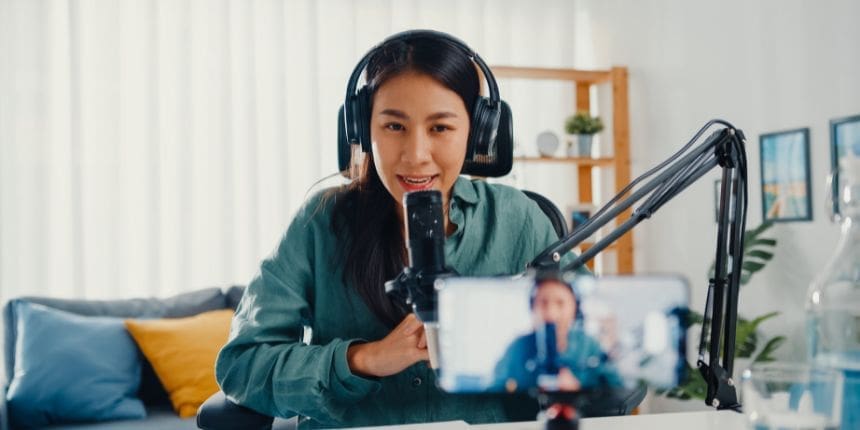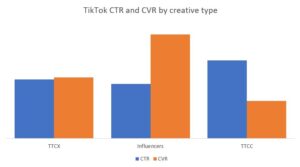
Amplify your reach and drive results with our tailored paid media strategies.

Influencer partnerships and user-generated content (UGC) are potent tools in the brand arsenal, especially in efforts to generate awareness, promote trust, and drive consideration. Many brands leverage influencers in their mix, while others go even further and whitelist their content to be used in paid media.
Boosting influencer creative is beneficial for brands for a few reasons:
In addition, well-performing influencer creative can boost campaign efficiency and drive more engagement and meaningful actions within the same campaign budget. But as brands increasingly work on boosting influencer content, a few important questions arise:
To shed some light on these topics, let’s take a closer look at influencer and UGC content performance in paid social, starting with some key definitions.
Influencer Content: Social media posts/reels/stories produced by an influencer and posted to the influencer’s channels. This content can then be boosted by the brand in the paid social campaigns.
UGC, or user-generated content: The same style of content as influencers, but the creator does not post it to their account and instead delivers it to the brand. The brand posts the content from its accounts or uses it in ads.
Influencers are defined into tiers by follower count:
With varying performance in boosted content and additional costs associated with acquiring the content, marketers naturally wonder if there is a foolproof approach to the selection process. However, as it usually is with marketing, the right approach is to test and learn.
The success of influencer creative for wider audiences (in other words, in ad campaigns) does not correlate with the size of the influencer’s own audience. Boosting Mega-tier influencer content is not a guarantee of success, and smaller influencers available for whitelisting at lower budgets can perform well in paid social campaigns. In whitelisting, the “fit” between the influencer, their content, and the brand is hugely important and can have a significant impact on awareness, consideration, and sales across wider audiences.

A few recommendations on picking well-suited influencers for paid campaigns:
When it comes to brand ads, it is standard practice to develop creative specifically for the platform where it is going to run. This ensures that formats, designs, and CTAs are optimized for the environment in which they will be seen. In general, advertisers don’t need to worry about the technical side of things since the creators themselves will post their content to the platform. Even if they are posting the content to multiple social platforms, it will necessarily adhere to the requirements of each.
If the influencer maintains a presence on multiple social platforms, should you whitelist all of their content? Or is it better to work with unique sets of influencers on a platform-by-platform basis? There is no single perfect recipe for this. We have seen campaigns where an influencer’s content is the top performer on one platform but underperforms on another.
Remember, too, that an audience’s preferences and behavior can vary by platform. While they engage with content on one social network, the same content might be less appealing on another.

The solution is testing and learning. Expanding the range of platforms for which the content is whitelisted from your top influencers is a way to start. However, identical performance should not be expected, and you should have more options in the testing pipeline whenever possible.
TikTok transformed the influencer world by changing not only the type of content that gains popularity but the means of that content gaining popularity. Follower counts have become less important in gaining exposure to audiences and a new wave of influencers has emerged.
In this new environment, brands can still go the traditional route of influencer partnership and content boosting, or they can capitalize on the “everyone can be an influencer” mentality and acquire quality UGC at a lower cost. At this point, TikTok’s creative solutions—TTCC and TTCX—enter the chat.
Subscribe to our monthly newsletter.
Both TTCC and TTCX require media spend commitment but do not add additional charges for creative when these commitments are met. In other words, there is no extra cost for creative—all spend goes towards media.
Both TTCC and TTCX deliver UGC, with the exact performance by creative type specific to each brand. But which approach will work best for your brand? Based on our experience, here are our potential scenarios for different types of content:

In short, there are several key points to keep in mind when working with influencer and user-generated content in paid social:
Paid social is a fast-moving environment with exciting possibilities, but it can also be difficult to know where to start. Reach out to the DAC media team for support with your paid social strategy and we’ll be happy to help.
Amplify your reach and drive results with our tailored paid media strategies.
Amplify your reach and drive results with our tailored paid media strategies.
Subscribe to our monthly newsletter.